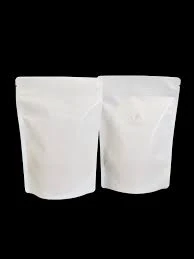- Afrikaans
- Albanian
- Amharic
- Arabic
- Armenian
- Azerbaijani
- Basque
- Belarusian
- Bengali
- Bosnian
- Bulgarian
- Catalan
- Cebuano
- chinese_simplified
- chinese_traditional
- Corsican
- Croatian
- Czech
- Danish
- Dutch
- English
- Esperanto
- Estonian
- Finnish
- French
- Frisian
- Galician
- Georgian
- German
- Greek
- Gujarati
- haitian_creole
- hausa
- hawaiian
- Hebrew
- Hindi
- Miao
- Hungarian
- Icelandic
- igbo
- Indonesian
- irish
- Italian
- Japanese
- Javanese
- Kannada
- kazakh
- Khmer
- Rwandese
- Korean
- Kurdish
- Kyrgyz
- Lao
- Latin
- Latvian
- Lithuanian
- Luxembourgish
- Macedonian
- Malgashi
- Malay
- Malayalam
- Maltese
- Maori
- Marathi
- Mongolian
- Myanmar
- Nepali
- Norwegian
- Norwegian
- Occitan
- Pashto
- Persian
- Polish
- Portuguese
- Punjabi
- Romanian
- Russian
- Samoan
- scottish-gaelic
- Serbian
- Sesotho
- Shona
- Sindhi
- Sinhala
- Slovak
- Slovenian
- Somali
- Spanish
- Sundanese
- Swahili
- Swedish
- Tagalog
- Tajik
- Tamil
- Tatar
- Telugu
- Thai
- Turkish
- Turkmen
- Ukrainian
- Urdu
- Uighur
- Uzbek
- Vietnamese
- Welsh
- Bantu
- Yiddish
- Yoruba
- Zulu
desicant bags
Understanding Desiccant Bags An Essential Tool for Moisture Control
Desiccant bags are small pouches filled with materials that absorb moisture from the surrounding environment. These bags serve a crucial role in preserving the integrity of products during storage, transportation, and usage. Whether found in packaging for electronics, food products, or pharmaceuticals, desiccant bags provide a simple yet effective solution to combat the adverse effects of humidity.
What Are Desiccant Bags Made Of?
Desiccant bags typically contain silica gel, clay, calcium sulfate, or molecular sieves. Silica gel is the most common material, widely recognized for its high absorbent properties. Despite the name, silica gel is not a gel but rather a hard, porous substance made from silicon dioxide. Its structure allows it to trap moisture effectively, making it ideal for protecting goods that can be damaged by dampness.
Another common desiccant is activated clay, which is popular in moisture-sensitive industries due to its cost-effectiveness and efficiency. Calcium sulfate, often found in the form of anhydrite, is also used in certain applications. Molecular sieves are synthetic zeolites designed to absorb specific molecules, making them valuable for precise moisture control.
Applications of Desiccant Bags
Desiccant bags have a variety of applications across multiple industries. In the electronics sector, they safeguard sensitive devices by preventing moisture-related damage. Humidity can lead to corrosion, short-circuiting, and other issues that compromise the functionality of electronic components. By incorporating desiccant bags in packaging, manufacturers protect their products from the formidable effects of moisture exposure.
In the food industry, desiccant bags extend shelf life by controlling the moisture content within packaging. Foods that are prone to spoilage, such as dried fruits, jerky, and snacks, benefit significantly from the moisture-absorbing capabilities of these pouches. The elimination of excess moisture helps prevent mold growth and preserves texture and flavor.
desicant bags

Pharmaceuticals also leverage desiccant technology to maintain the efficacy of medications. Many drugs require specific humidity levels to remain stable. Desiccant bags help ensure that these products arrive at consumers in optimal condition, thus preserving their shelf life and effectiveness.
The Importance of Proper Use
While desiccant bags are essential, their effectiveness is contingent on proper use. Understanding the environment in which these bags are employed is vital. For instance, every desiccant has a maximum moisture-holding capacity, and once that threshold is reached, they can no longer absorb additional moisture. It's essential to replace them when they are saturated, especially in highly humid conditions.
Another critical factor is the selection of the right type and size of desiccant bag for the application. The amount of desiccant required depends on the volume of the container and the level of humidity present. Using insufficient desiccants can lead to ineffective moisture control.
Environmental Considerations
As consumer awareness of environmental issues grows, many people are looking for eco-friendly options. While traditional silica gel is often non-toxic, biodegradable alternatives are becoming more popular. Some manufacturers are now producing desiccants made from plant-based materials or utilizing recyclable packaging to minimize environmental impact.
Conclusion
Desiccant bags are an indispensable tool in modern packaging and storage solutions. Their ability to mitigate moisture-related damage plays a pivotal role in maintaining the quality and longevity of products across various industries. By understanding their functions, choosing the right materials, and employing them correctly, businesses and consumers alike can benefit from the protective capabilities these small but mighty pouches provide. As technology advances and environmental considerations become more pressing, the evolution of desiccant solutions will continue to adapt, ensuring that moisture control remains effective and sustainable.













